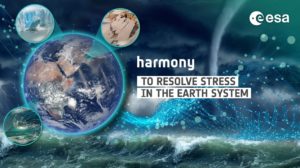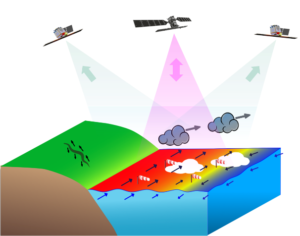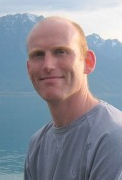Watch the COMET presentation “LiCSAR Catalogue and Response System of Sentinel-1 Earthquake-related Interferograms” from the Seismological Society of America (SSA) 2021 Annual Meeting.
Category Archives: COMET news
Harmony: Mission Candidate for the Earth Explorer 10
COMET scientists Professor Juliet Biggs (University of Bristol) and Professor Andy Hooper (University of Leeds) both serve on the Harmony Mission Advisory Group and are delighted to have been chosen to develop the concept further.
On February 18-19, ESA’s Programme Board for Earth Observation (PB-EO) decided on the continuation of the three Earth Explorer (EE) mission candidates towards the next phase in the path to their implementation. The three missions, namely, Daedalus, Hydroterra and Harmony, were selected in 2018 for a Phase-0 feasibility study out of 21 submitted proposals. The PB-EO has made now the unprecedented decision of selecting only one mission for Phase A, namely Harmony, instead of more than one as done in previous EE calls.
The Harmony mission is dedicated to the observation and quantification of small-scale motion and deformation fields at the air-sea interface (winds, waves, surface currents), of solid Earth (tectonic strain and height changes at volcanoes), and in the cryosphere (glacier flows and height changes). In order to achieve the different mission goals, the Harmony mission shall deploy two companion satellites following one of ESA’s Copernicus Sentinel-1 satellites. The companions will be flying in two different formations (see Figure 1): the stereo formation, with one Harmony satellite placed in front and one behind Sentinel-1, in both cases at a distance of about 350 km from it; and the cross-track formation, with both Harmony units flying close to each other (~200-500 m) also at 350 km from Sentinel-1. Each Harmony satellite carries as main payload a receive-only synthetic aperture radar (SAR), which shall acquire the reflected signals transmitted by Sentinel-1 towards the Earth. A multi-view thermal infra-red payload is also included to measure cloud height and cloud motion vectors. The angular diversity provided by the Harmonies in combination with Sentinel-1 will allow the retrieval of deformation measurements of the sea and earth surface with unprecedented accuracy (see Figure 2), while the cross-track configuration will allow the accurate measurement of elevation changes for land-ice and volcanic applications.
Figure 1: Representation of the (left) stereo and (right) cross-track flying formations for Harmony. The Sentinel-1 satellite is depicted in black color. Sentinel-1 transmits a signal and acquires the backscattered echoes (represented with magenta arrows), while the Harmony satellites receive part of the energy that bounces towards them (represented with the green arrows). Copyright: Harmony Mission Advisory Group.
Dr. Paco López-Dekker from the Delft University of Technology and principal investigator of the Harmony mission, comments “It is very exciting that our multi static-SAR concept, which combines many ideas that were matured during my years at HR, has made it to this final stage. During Phase-0 we have drafted a beautiful and elegant mission concept promising an unprecedented view at Earth System processes. Now we have the responsibility to look at it from all sides and be sure that it will work. Challenging and fun.”
Professor Juliet Biggs from the University of Bristol and member of Harmony’s Mission Advisory Group at ESA adds “The Harmony mission is remarkable in that it promises new scientific discoveries across an astonishing breadth of topics: from the gradual motion of tectonic plates to small-scale processes on the ocean surface. I’m delighted that we have been selected to develop the concept further and that Harmony is one step closer to becoming a reality”
Dr. Pau Prats, from the German Aerospace Centre, DLR and member of Harmony’s Mission Advisory Group at ESA, is convinced of the benefits a mission like Harmony will bring to the community: “The unique configuration of the Harmony satellites in combination with Sentinel-1 will allow us to literally add a new dimension to SAR observations, a fact that will foster SAR technology and its applications during the next two decades.”
Figure 2: Coloured areas show regions straining at greater than 10 nanostrain per year (the threshold above which 95% of earthquake fatalities occur). Blue regions are those that have a small component of north-south strain and can be imaged by Sentinel-1 alone. Red regions indicate the extra area that will be constrained by Harmony. From Harmony Report for Assessment. 2020.
So, what’s next? Even though Harmony is currently the only EE-10 mission candidate it does not mean it will be implemented. The industry and science teams have one and a half years of hard work ahead to demonstrate the mission has reached the technological and scientific level of maturity required to enter into the next phase, that will ultimately result in the launch of the Harmony satellites by the end of this decade.
Announcement can be found on ESA website: https://www.esa.int/Applications/Observing_the_Earth/ESA_moves_forward_with_Harmony
Title figure for the Harmony mission. Copyright: ESA.
COMET commentary on satellite InSAR – Nature Communications
How satellite InSAR has grown from opportunistic science to routine monitoring over the last decade
COMET Deputy Director (Volcanoes), Prof. Juliet Biggs, and COMET Director, Prof. Tim Wright, have written a commentary on satellite InSAR for the 10 year anniversary of
Nature Communications out in print! Read the article here.
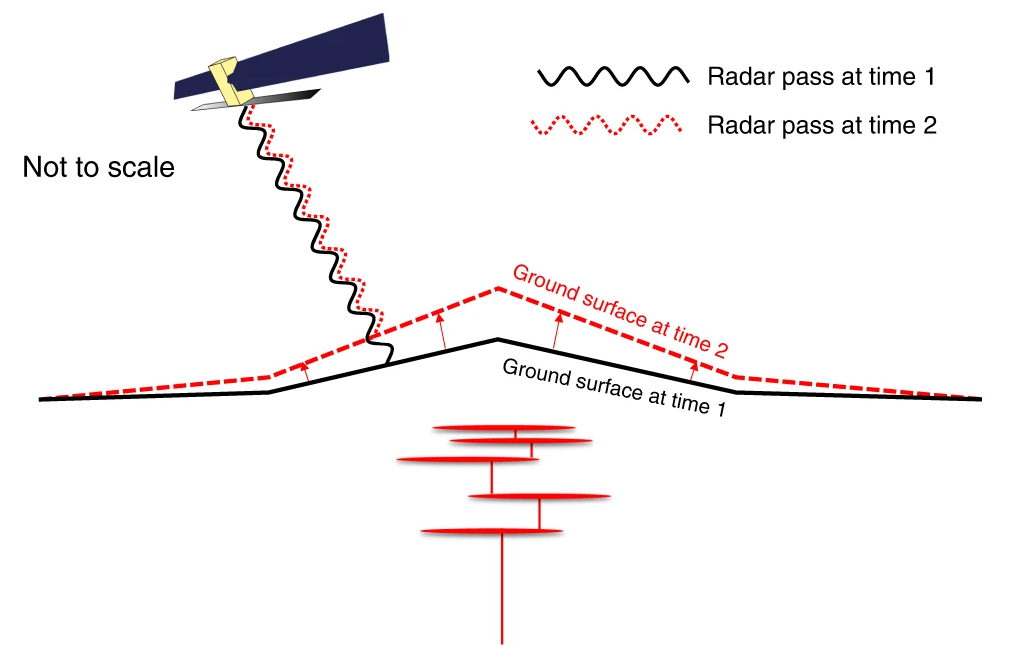
COMET Award Success!
The achievements of four COMET scientists have been recognised in a recent spate of prizes!
Juliet Biggs, Reader at the University of Bristol, has been announced as a 2018 Philip Leverhulme Prize Winner, recognising her outstanding research in volcanology to date and future potential.

Juliet studies the physics by which plate boundaries develop by studying active volcanoes and earthquakes. Her work on Africa’s Great Rift Valley has demonstrated the relative role played by volcanoes, magma intrusions and faults during continental rifting.
Globally, she has discovered that many volcanoes previously believed to be dormant are actually restless, and investigated the link between deformation and eruption, and the mechanisms for coupled eruptions. Her work has changed the perception of geophysical hazards in Africa and the way in which volcanoes are monitored and modelled globally.
Juliet will use the prize to investigate the mechanisms that drive volcano deformation globally, by exploiting the new wealth of satellite data. This will include methods for combining satellite deformation and gas measurements to provide a new perspective on the role volatiles play in eruptions, and using deep learning tools to interrogate large datasets.
Tamsin Mather, Professor of Earth Sciences at the University of Oxford, meanwhile received the 2018 Rosalind Franklin Award from the Royal Society.

This award recognises her achievements in the field of volcanology as well as her ability to communicate with the public. Tamsin delivered the Rosalind Franklin Award Lecture on 18 October, speaking on how lessons learned sitting on the edge of an active volcano today can give us insights into some of the most profound environmental changes in geological history. With her award, Tamsin will now be implementing a project that raises the profile of women in STEM.
Philip England, Chair of Geology at the University of Oxford, has been awarded the AGU Walter H. Buchner Medal 2018.

This is given every two years in recognition for “original contributions to the basic knowledge of crust and lithosphere.” Professor England will be awarded his medal at the AGU Fall Meeting later this year.
Finally, our congratulations go to the 2019 Thermo-Fisher Scientific VMSG awardee, Dr Marie Edmonds, Reader in Earth Sciences at the University of Cambridge.
This award is bestowed annually on an individual who has made a significant contribution to our current understanding of volcanic and magmatic processes, and Marie will give the VMSG keynote lecture in January 2019.
COMET honoured by Royal Astronomical Society
COMET’s achievements in Earth observation and modelling have been recognised by the Royal Astronomical Society (RAS) in their latest round of awards.

The 2018 RAS Group Achievement Award in Geophysics acknowledges COMET’s success in using satellite and ground-based observations and geophysical modelling to study earthquakes, volcanoes and tectonics across the globe.
COMET Director Tim Wright said: “We are delighted that our collective achievements have been recognised by the RAS in this way. It’s particularly rewarding to receive an honour for the full breadth and depth of COMET’s research.”
In granting the award, the RAS highlighted COMET’s contributions to satellite geodesy, particularly Synthetic Aperture Radar Interferometry (InSAR), which has significantly improved COMET’s ability to respond to tectonic events. Notably, COMET’s InSAR capabilities allowed rapid and in-depth investigations into the 2016 Amatrice, Italy and Kaikoura, New Zealand earthquakes.

Sentinel-1 interferogram of the ground deformation around Amatrice, Italy due to the 24 August 2016 earthquake.
Professor Wright added: “In both cases, we used InSAR to reveal the surprising complexity of the underlying faults, helping us to interpret the events and improve seismic hazard models.”
The launch of LiCSAR, COMET’s automated processing system, in December 2016 represented a major forward step in managing the vast amounts of data generated by the Sentinel-1 constellation, part of the EU’s Copernicus programme. LiCSAR is enabling scientists to study specific earthquakes and eruptions as well as longer-term records of tectonic strain and ground deformation around volcanoes – including potential signs of eruption.
The service is already providing high-resolution deformation data for the entire Alpine-Himalayan seismic belt, where most of the planet’s deadly earthquakes occur, and will be expanded to provide global coverage of the tectonic belts over the next few years.

LiCSAR, the COMET-LiCS Sentinel-1 InSAR portal
COMET is also using automated Sentinel-1 data alongside other techniques to monitor deformation at over 900 volcanoes worldwide, including regions with hazardous volcanoes that have no ground-based monitoring in place. The ultimate goal is to monitor all active land volcanoes, around 1,300 in total.
Elsewhere in COMET, satellite imagery is being combined with topographic data and fieldwork to create a database of active faults in the Tien Shan, a region of high seismic hazard in northern Central Asia. Working with international partners, this is creating a robust regional model of strain accumulation and release that can be used in hazard management.
Atmospheric studies are also central to COMET’s work. The satellite-borne Infrared Atmospheric Sounding Instrument (IASI) is being used to monitor volcanic ash and SO2 emissions such as those from Holuhraun (Iceland), whose eruption in 2014-15 was a major source of SO2 emissions. Holuhraun’s remoteness made it difficult to monitor the volcano from the ground, especially during the harsh Icelandic winter, but using IASI data, COMET was able to provide insights into both the volcano’s behaviour and its environmental impacts. The same approach has now been extended to other remote volcanoes such as Kamchatka (Russia) and Tungurahua (Ecuador).

Elevated levels of SO2 frequently identified using IASI measurements at volcanoes in Ecuador (a,b) and Kamchatka, Russia (c,d)
These are just a few aspects of COMET’s work, carried out by researchers across the UK as part of national and international collaborations. At the same time, COMET is supporting a vibrant community of around 80 research students, working on topics ranging from monitoring volcano deformation to modelling earthquake sequences. There is a strong commitment to developing the next generation of researchers, with COMET providing bespoke training to both members and the wider community on interpreting InSAR and GPS data to better understand geohazards and achieve scientific goals.
Moving forward, COMET remains committed to providing open data on earthquakes, tectonics and volcanoes to support scientists worldwide, and providing greater insight into how the Earth is deforming.
Professor Wright summarised: “This honour from RAS is a great reward for the efforts being made across the COMET family to improve our understanding of earthquakes and volcanoes. The aim now is to continue to make ground-breaking progress that also benefits the communities and decision makers managing these geohazards as part of daily life.”
Notes
- The NERC-funded UK Centre for Observation and Modelling of Earthquakes, Volcanoes and Tectonics (COMET) provides national capability in the observation and modelling of tectonic and volcanic hazards. COMET delivers services, facilities, data and long-term research to produce world-leading science that can help the UK and others to prepare for, and respond rapidly to, earthquakes and eruptions. Further information can be found at https://comet.nerc.ac.uk.
- COMET was founded in 2002, rapidly becoming a world-leading centre for the integrated exploitation of Earth Observation and ground-based data with geophysical models for research into geohazards. From 2008 to 2014, COMET formed a theme within the National Centre for Earth Observation (NCEO). Since 2014, COMET has worked in partnership with the British Geological Survey (BGS).
- COMET is currently distributed across nine UK academic institutions: the universities of Bristol, Cambridge, Durham, Leeds, Liverpool, Newcastle, Oxford and Reading and University College London. A full membership list can be found at https://comet.nerc.ac.uk/whos-who/.
- The Royal Astronomical Society (ras.org.uk) was founded in 1820 to encourage and promote the study of geophysics as well as astronomy and solar-system science. The Group Award recognises outstanding achievement by large consortia in any branch of astronomy or geophysics. The full citation for COMET’s award can be found via the RAS website.
- LiCSAR, the COMET-LiCS Sentinel-1 InSAR portal can be found at https://comet.nerc.ac.uk/COMET-LiCS-portal. LiCSAR is funded by NERC via COMET (COME30001), the Looking inside the Continents from Space large grant (NE/K011006/1), and the Earthquakes without Frontiers project (NE/J01978X/1).
Juliet Biggs receives 2017 AGU Geodesy Section Award
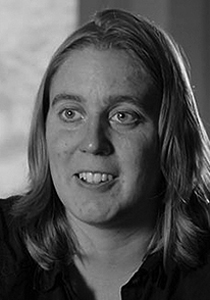 The award recognises Juliet’s outstanding contributions to the field of satellite geodesy for understanding both active volcanism and faulting.
The award recognises Juliet’s outstanding contributions to the field of satellite geodesy for understanding both active volcanism and faulting.
On receiving the award, she said: “Many of the previous AGU Geodesy Section Award winners have been role models for me personally, and seeing my name among them is truly humbling.”
You can read the full article on the AGU’s Eos website.
Andy Hooper receives 2016 AGU Macelwane Medal
Congratulations to COMET scientist Professor Andy Hooper, who has been awarded the American Geophysical Union (AGU) James B. Macelwane Medal in recognition of his contributions to the geophysical sciences.
Established in 1961, the medal is given to outstanding early career scientists who have shown depth, breadth, impact, creativity and novelty in their research.
Professor Hooper, who is also Co-Director of the Institute of Geophysics and Tectonics at University of Leeds, pioneered the development of new software (StaMPS) to extract ground displacements from time series of synthetic aperture radar (SAR) acquisitions. StaMPS is now used widely across the Earth Observation community.
He also discovered a new link between ice cap retreat and volcanism via geodetic monitoring from space and subsequent modelling of the 2010 Icelandic volcanic eruptions, and played a significant role in the €6m FUTUREVOLC project, leading the long-term deformation effort to integrate space and ground based observations for improved monitoring and evaluation of volcanic hazards.
Alongside other COMET researchers, he was part of a team contributing to the international scientific response to the earthquake which devastated Nepal in April 2015.
Most recently, working with colleagues from Iceland, he has shed new light on how volcanoes collapse during major eruptions, focusing on the 2014-15 eruption at Bárdarbunga.
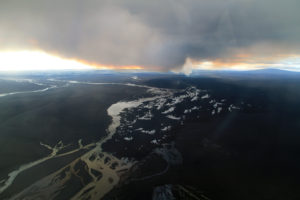
Professor Hooper will be presented with the award at the 2016 AGU Fall Meeting, where he will also be giving a talk at the Union Session focusing on the new generation of scientists, where he will also be conferred an AGU fellow.
Congratulations Andy from all your colleagues at COMET.
Dr Paola Crippa awarded L’Oréal-UNESCO For Women In Science Fellowship
COMET Research Associate Dr Paola Crippa, from the University of Newcastle, has been awarded a prestigious L’Oréal-UNESCO National For Women In Science Fellowship.
<a href="http://tempcomet.leeds.ac viagra prix en pharmacie paris.uk/wp-content/uploads/2015/07/Paola.jpg”>
This programme encourages greater participation of women in science across the globe by promoting and rewarding outstanding female postdoctoral researchers.
One of five winners, Paola was selected by a jury of eminent scientists, chaired by Professor Pratibha Gai who was L’Oréal’s International Laureate in 2013.
Her research, focusing on particulate matter transportation and implications for human health, integrates model results with satellite data to more accurately predict population exposure to harmful concentrations of particulate matter.
Paola will not only benefit from financial support for her research, but also a raft of career and life enhancing experiences such as media training, personal impact coaching, speaking opportunities, networking events and access to senior mentors and role models.
Congratulations Paola from all at COMET.
Professor James Jackson Awarded CBE in Queen’s Birthday Honours
Congratulations to COMET’s James Jackson who has received a CBE for his services to environmental science.
As well as being Head of the Department of Earth Sciences at Cambridge, James was one of the founding members of COMET and has been a major contributor to its ongoing success.
James has pioneered the combination of earthquake source seismology, geomorphology, space geodesy and remote sensing to examine how the continents are deforming, looking at scales that range from single earthquakes to the vast continental areas of active plate movement such as Africa, Iran and the Aegean.
He is also currently leading the Earthquakes without Frontiers (EwF) project, which brings together Earth and social scientists, science communicators, policy makers and local and regional organisations to increase resilience to earthquakes in countries across Asia.
Following the devastating earthquakes earlier this year, the EwF team has been working with colleagues in Nepal with a view to improving resilience to future earthquakes, not just in Nepal and neighbouring countries, but also for earthquake-prone nations across the globe.
COMET Director Tim Wright said “James has had a huge influence on many of us as a scientist, teacher, and colleague, and I congratulate him on this latest award ”.
Earlier this month, James also received the Wollaston Medal, the highest award given by the Geological Society.
Well done James from all at COMET, we wish you continued success.
Notes: Professor James Jackson is Head of the Department of Earth Sciences at the University of Cambridge and also a Fellow of the Royal Society (FRS). You can read more about James and his work here.
COMET Director receives Rosentiel Award
COMET Director Tim Wright has been selected as the 2015 Rosentiel Award Recipient by the University of Miami (UM) in recognition of his research into deformation of the Earth’s crust in response to tectonic forces.
The Rosenstiel Award honours scientists who, in the past decade, have made significant and growing impacts in their field. Tim’s major achievements include the discovery of a continental rifting event in Ethiopia’s Afar region, one of the few places on Earth where a mid-ocean ridge comes ashore.
He was also one of the first scientists to measure how plate boundary zones deform, solely relying on satellite observations using a technique called satellite radar interferometry.
Tim presented the 2015 Rosenstiel Award Lecture, “Witnessing the Birth of Africa’s New Ocean” at the UM Rosenstiel School auditorium on Friday 3 April.
You can read more here.

